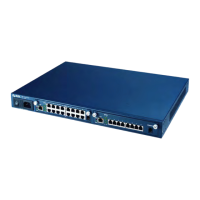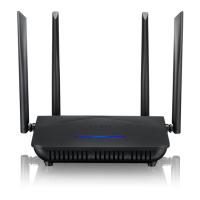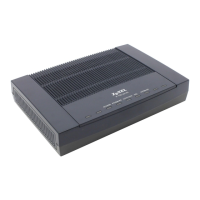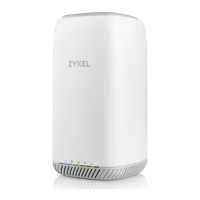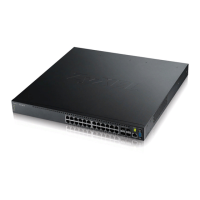IES-2000/3000 User’s Guide
General, Switch and IP Setup 19-3
19.2.1 VDSL Mode
Each VDSL mode operates in a different frequency band allocation, resulting in different upstream and
downstream speeds. The following table summarizes transmission speeds and frequency ranges for each VDSL
mode supported by the VLC1012.
Table 19-3 VDSL Mode, Frequency Ranges and Speeds
VDSL MODE FREQ. RANGE (Hz) LINE SPEED (Mbps)
10 Base-S
Upstream 4.0M 7.9M 1.56 6.25 9.38 12.50 18.75
Downstream 900K 3.0M 4.17 6.25 8.33 12.50 16.67
ANSI/ETSI Plan 998
Upstream 4.0M 5.0M 1.56 3.13 6.25
Downstream 900K 3.0M 4.17 6.25 8.33 12.50 16.67
ETSI Plan 997
Upstream 4.0M 5.0M 1.56 3.13 6.25
Downstream 900K 2.7M 4.17 6.25 9.38 12.50
19.2.2 Modem Firmware Upgrade
This option enables the uploading of VDSL modem firmware (the default is Yes) if the subscribers VDSL
modem firmware is an older version than that of the VLC1012. This ensures that all VDSL clients on the
VLC1012 have the same firmware as the actual VLC and avoids potential compatibility conflicts.
19.2.3 Ethernet Port Trunking
Ethernet port trunking lets you aggregate the Ethernet ports into one logical link. The VLC1012 uses MAC-based
load balancing which analyzes a packet’s source and destination MAC addresses to distribute the load between the
two Ethernet ports when uplinking to the remote switch.
The remote switch to which the VLC1012 connects must also support Ethernet port trunking.
The load-balancing method, however, does not have to be the same as on the VLC1012.
Note that the two uplink ports must be connected to a single remote switch when port trunking is enabled.
19.2.4 GARP Timer Setup
GARP (Generic Attribute Registration Protocol) allows network devices to register and de-register attribute values
with other GARP participants within a bridged LAN. GARP is a protocol that provides a generic mechanism for
protocols that serve a more specific application, for example, GVRP (GARP VLAN Registration Protocol).
GARP and GVRP are the protocols used to automatically register VLAN membership across switches.

